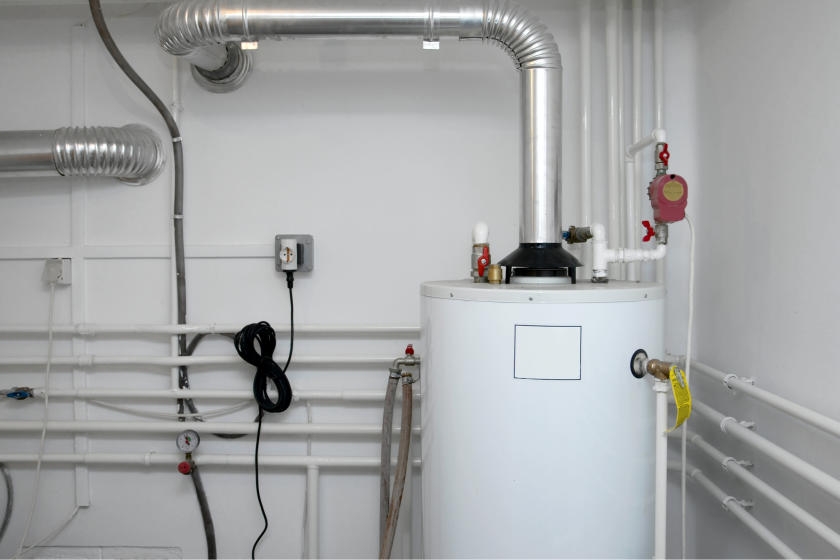Caring for Your Home's Hot Water System: Key GuidelinesEasy Guide to Caring for Your Home's Hot Water SystemWays to Prolong the Lifespan of Your Home's Hot Water System Through Maintenance
ContactIn this article in the next paragraphs you will discover additional good quality guidance when it comes to Tips on Maintaining a Water Heater.

Hot water is necessary for daily comfort, whether it's for a revitalizing shower or cleaning dishes. To ensure your warm water system runs successfully and lasts much longer, regular maintenance is crucial. This write-up provides functional tips and understandings on just how to preserve your home's warm water system to stay clear of disturbances and costly repair work.
Introduction
Preserving your home's warm water system may appear daunting, but with a few simple steps, you can ensure it operates smoothly for years to find. This guide covers whatever from understanding your hot water system to DIY maintenance pointers and knowing when to hire professional help.
Relevance of Maintaining Your Warm Water System
Routine upkeep not just expands the lifespan of your warm water system however also guarantees it runs efficiently. Disregarding maintenance can lead to lowered efficiency, higher energy expenses, and even early failure of the system.
Indicators Your Hot Water System Requirements Upkeep
Recognizing when your warm water system needs attention can protect against significant problems. Look out for indicators such as irregular water temperature, unusual noises from the heater, or rustic water.
Flushing the Water Heater
Flushing your hot water heater gets rid of sediment accumulation, enhancing effectiveness and extending its life.
Checking and Replacing Anode Rods
Anode poles stop deterioration inside the tank. Examining and replacing them when worn out is crucial.
Facility Concerns Needing Professional Aid
Instances include significant leaks, electric troubles, or if your water heater is consistently underperforming.
Routine Professional Upkeep Perks
Expert maintenance can consist of complete evaluations, tune-ups, and ensuring compliance with security standards.
Checking and Adjusting Temperature Level Settings
Changing the temperature setups guarantees optimum performance and safety and security.
DIY Tips for Upkeep
You can perform a number of maintenance jobs on your own to keep your warm water system in top condition.
Looking for Leaks
Regularly check pipelines and connections for leakages, as these can bring about water damage and greater costs.
Recognizing Your Warm Water System
Before diving right into maintenance jobs, it's helpful to comprehend the standard components of your warm water system. Usually, this includes the hot water heater itself, pipes, anode rods, and temperature controls.
Month-to-month Upkeep Tasks
Regular regular monthly checks can assist capture minor problems prior to they escalate.
Checking Pressure Alleviation Valves
Evaluating the stress relief valve guarantees it works correctly and stops too much stress build-up.
Insulating Pipes
Protecting warm water pipelines lowers warm loss and can conserve power.
When to Call a Professional
While DIY maintenance is helpful, some concerns call for professional know-how.
Verdict
Normal upkeep of your home's warm water system is important for efficiency, durability, and expense financial savings. By adhering to these pointers and recognizing when to look for specialist aid, you can make certain a dependable supply of warm water without unanticipated disturbances.
Water Heater Maintenance Tips
Test the TPR Valve
Shut off the power and the cold-water supply valve. Place a bucket under the pipe connected to the temperature-pressure-release (TPR) valve on the top or side of the tank. (This valve opens if the tank pressure gets too high.) Lift the valve’s tab to let some water out, then let go. If water keeps flowing, drain the tank partway, unscrew the old valve with a pipe wrench, and install a new one. Check the Anode Rod
Put a hose to the tank’s drain cock and let out a few gallons of water. Now fit a 1 1/16-inch socket onto the rod’s hex head on top of the heater (or under its top plate) and unscrew the rod. If it’s less than ½ inch thick or coated with calcium, buy a new one, wrap its threads with Teflon tape, put it back in the tank, and tighten securely. Use this segmented rod if headroom above the tank is limited. Drain the Tank and Wash Out Sediment
Drain the remaining water in the tank into the bucket, then stir up the sediment on the tank’s bottom by briefly opening the cold-water supply valve. Drain and repeat until clean water comes out of the hose. Close the drain cock, refill the tank, and turn its power back on. Adjust the Temperature
Find the temperature dial on the side of the tank and unscrew its cover. Adjust the dial to 120 degrees using a flathead screwdriver. For every 10 degrees the temperature is lowered, you can expect to save up to 5 percent in energy costs. Turn the water heater off or the thermostat down to its lowest setting if you plan to be away from home for more than three days. Insulate the Pipes
Buy some self-sticking 3/8-inch-thick foam pipe insulation that matches the pipes’ diameter. Slide the foam over the hot-and cold-water pipes as far as you can reach. Insulating the cold-water pipe prevents condensation in summer. Peel the tape and squeeze the insulation closed. If the pipe is 6 inches or less from the flue, cover it with 1-inch-thick unfaced fiberglass pipe wrap. https://www.thisoldhouse.com/plumbing/21016402/how-to-maintain-a-water-heater

I was guided to that editorial about Tips on Maintaining a Water Heater through someone on our other web page. If you enjoyed reading our page if you please consider to share it. Thanks a lot for going through it.
Give Me A Quote!